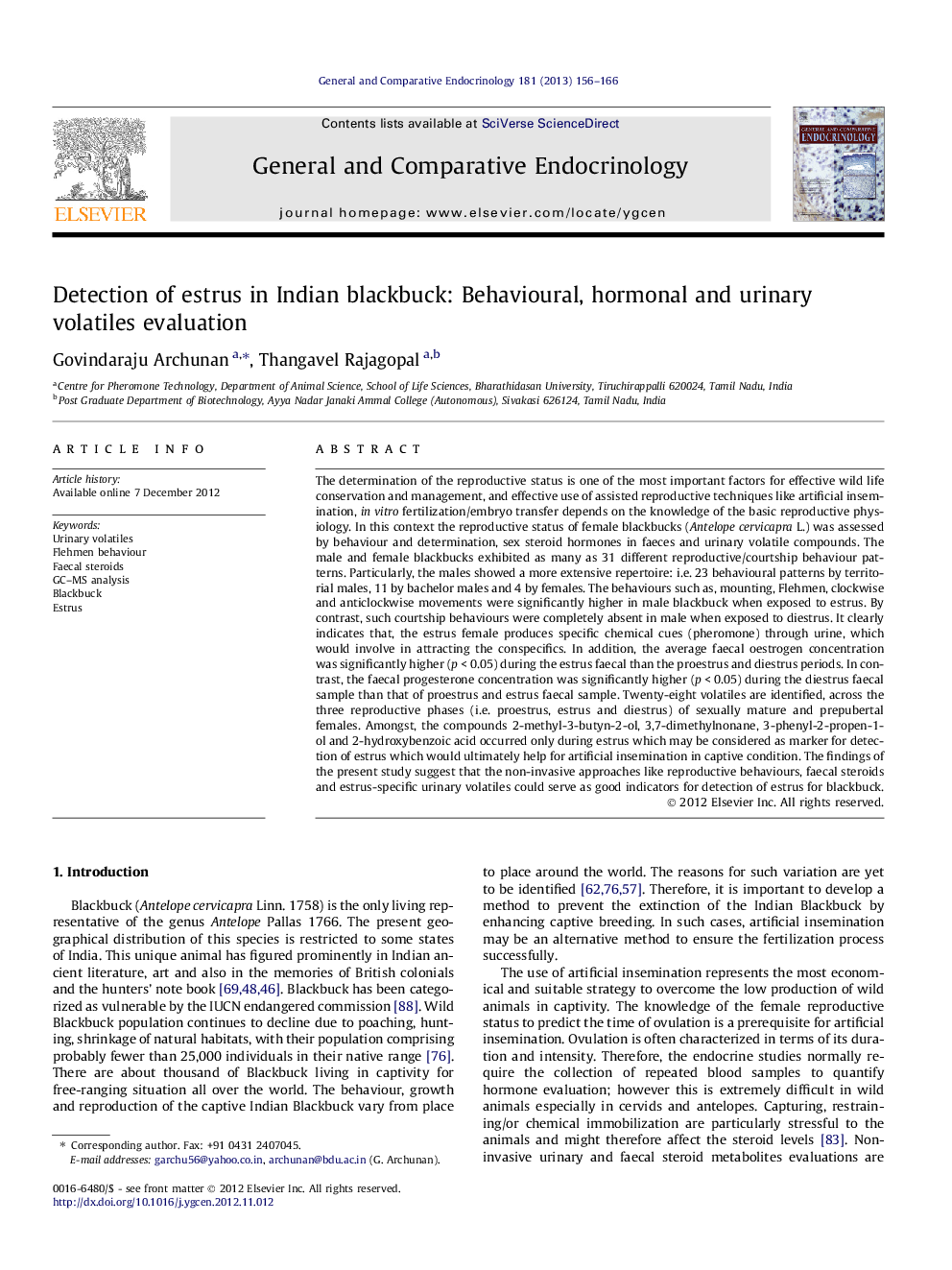| کد مقاله | کد نشریه | سال انتشار | مقاله انگلیسی | نسخه تمام متن |
|---|---|---|---|---|
| 2800410 | 1568924 | 2013 | 11 صفحه PDF | دانلود رایگان |

The determination of the reproductive status is one of the most important factors for effective wild life conservation and management, and effective use of assisted reproductive techniques like artificial insemination, in vitro fertilization/embryo transfer depends on the knowledge of the basic reproductive physiology. In this context the reproductive status of female blackbucks (Antelope cervicapra L.) was assessed by behaviour and determination, sex steroid hormones in faeces and urinary volatile compounds. The male and female blackbucks exhibited as many as 31 different reproductive/courtship behaviour patterns. Particularly, the males showed a more extensive repertoire: i.e. 23 behavioural patterns by territorial males, 11 by bachelor males and 4 by females. The behaviours such as, mounting, Flehmen, clockwise and anticlockwise movements were significantly higher in male blackbuck when exposed to estrus. By contrast, such courtship behaviours were completely absent in male when exposed to diestrus. It clearly indicates that, the estrus female produces specific chemical cues (pheromone) through urine, which would involve in attracting the conspecifics. In addition, the average faecal oestrogen concentration was significantly higher (p < 0.05) during the estrus faecal than the proestrus and diestrus periods. In contrast, the faecal progesterone concentration was significantly higher (p < 0.05) during the diestrus faecal sample than that of proestrus and estrus faecal sample. Twenty-eight volatiles are identified, across the three reproductive phases (i.e. proestrus, estrus and diestrus) of sexually mature and prepubertal females. Amongst, the compounds 2-methyl-3-butyn-2-ol, 3,7-dimethylnonane, 3-phenyl-2-propen-1-ol and 2-hydroxybenzoic acid occurred only during estrus which may be considered as marker for detection of estrus which would ultimately help for artificial insemination in captive condition. The findings of the present study suggest that the non-invasive approaches like reproductive behaviours, faecal steroids and estrus-specific urinary volatiles could serve as good indicators for detection of estrus for blackbuck.
► Non-invasive approaches for estrus detection in blackbuck.
► Estrus detection in blackbuck by behaviour, faecal hormones and urinary volatiles.
► Estrus assessment in blackbuck through faecal hormones and urinary compounds.
Journal: General and Comparative Endocrinology - Volume 181, 15 January 2013, Pages 156–166